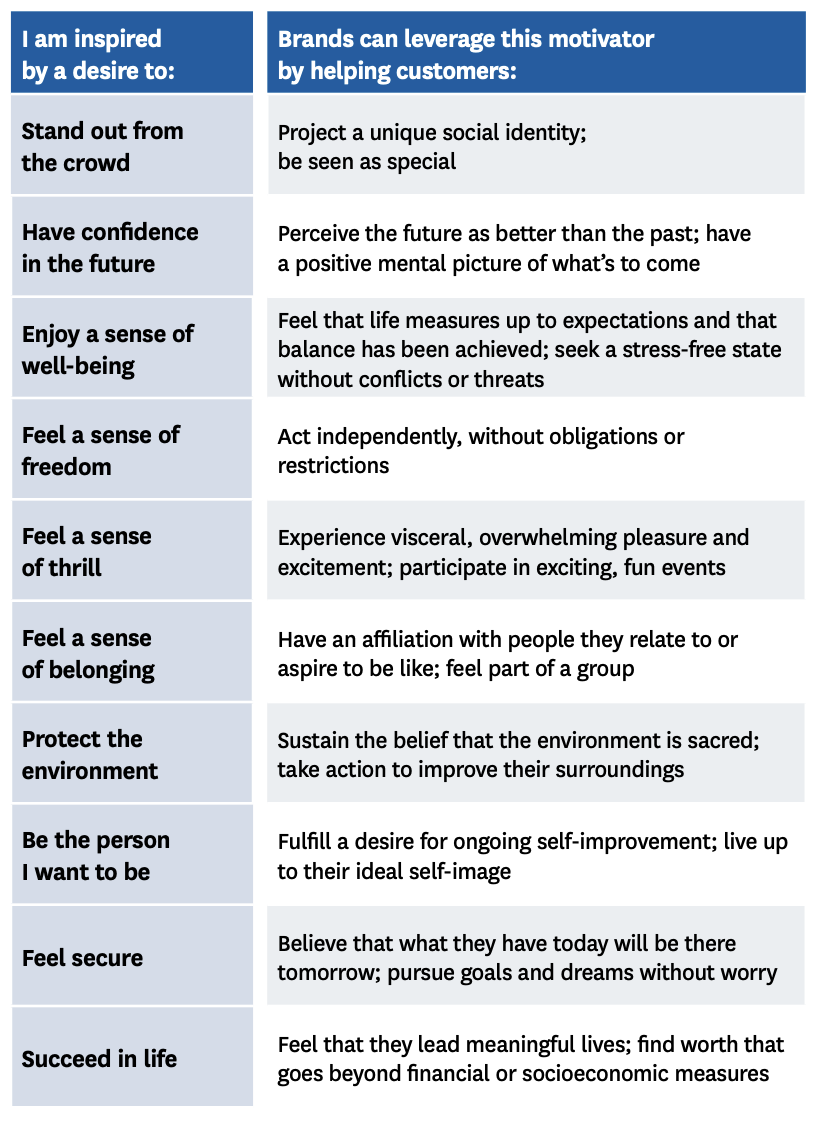If you’re in business for yourself or are thinking of starting your own business, you probably want to know how to run a successful business, right?
You might be even wondering what makes a business successful compared to all of those businesses that fail within the first few months or years of starting. (According to the Small Business Administration, over 50% of businesses don’t make it past their first five years!)
I want to make sure you’re part of the 50% that succeeds.
Let’s start learning.
What makes a business successful?
- The definition of a successful business is a business that grows in the long-term and is profitable.
- To me, success means freedom.
- So, when you ask: “When is a business considered successful?”
My answer is that a business is successful when:
- It keeps making money
- Your clients or customers are happy
- You get to live the life you’ve always dreamed of
- Now, let’s learn how to make ALL of that happen.
10 ways to grow a successful business
What are the strategies to grow a profitable business?
It comes down to a combination of different things.
Let’s explore my top 10 ways to make a successful business.
1. The right business idea
Let’s start with some good news:
To run a successful business, you don’t need to come up with the next Amazon or viral social media app.
What you NEED is a business idea that helps you build your business as fast as possible and offers real value to a specific target market.
There are many different possible business models. But when you’re just starting out, coaching or consulting are a great choice.
They’re profitable and simple to start — no need for major funds.
In fact, you could most likely start TODAY. That’s because you already know things that others will pay for.
Here’s how you can figure out what that is:
Write down things you’re good at.
Think about what people often ask you.
For example, maybe friends frequently ask you about your cooking skills? Or perhaps they’re curious about your amazing public speaking skills?
This helps you find out what you can sell — your business idea.
Need a few examples?
Here are some ideas my clients have come up with within the coaching space:
- Relationship coaching
- Career coaching
- Marketing and sales consulting
- Health coaching
- Brand consulting
- Spiritual coaching
Of course, starting a coaching business isn’t the only option.
Here are some ideas for other business models:
Freelancing: Offer specific skills or services on a project basis. Think of graphic design or content writing.
A creator or influencer: Build a following and monetize your content or promotions. You could become a YouTube vlogger or an Instagram fashion influencer.
E-commerce business: Sell physical products, such as funny T-shirts or home fitness equipment.
Selling online courses: Sell your knowledge or skills in a structured format. For example, you could offer a digital photography course or baking tutorials.
Subscription/Membership model: Offer exclusive content or products for a recurring fee. Ideas: monthly gourmet boxes or an exclusive writing club.
Apps: Create tools or platforms for mobile or desktop use, like a workout tracker or a recipe suggestion app.
There are MANY ways to start.
You just have to figure out what’s right for you.
The next element you need to have in place are goals.
Let’s take a look at them.
2. Goal setting
To run a highly successful business, you need a map. And that map comes in the form of clear goals.
By setting the right goals, you success-proof your business and get rid of a lot of unnecessary worries.
Sure, you can’t plan for everything. But you can be prepared.
According to research, there are other good reasons to have business goals. For example, studies show that they:
- Provide motivation to do the work
- Help avoid wasting time on things that don’t matter
- Increase persistence and reduce the likelihood of giving up
- For this to happen, you need to set the right goal.
For example, “I want to make a lot of money this year” is NOT a good goal.
I like big goals. But if you make a goal without a plan to reach it, it’s just a dream.
Instead, you might set a goal of “making a steady amount of money every month.”
Some other good first-year goals are:
- Think of a business idea (see above)
- Set up a solid business plan
- Get your first customers (see step 6)
- Collect your first three testimonials
The best goals make you a little nervous, while still being within reach.
3. An entrepreneurial mindset
What are some characteristics of a successful business owner?
Besides a great business model, the MOST successful business owners have another thing in common: they have an entrepreneurial mindset.
This is the KEY to a business that thrives.
In fact, not having it is the reason why so many businesses fail.
Challenges and problems will come up in business. If you can’t handle them and take action, your business won’t last long.
Studies show that our brain often tricks us into focusing on the setbacks rather than the wins. This is called a negativity bias.
Luckily, our mindset is flexible. We can change how we think.
When you learn to see more opportunities instead of roadblocks, you’re likely to push through challenges. You start to believe success isn’t just for others but for you too.
After having learned this myself through trial and error, I now pass this entrepreneurial mindset .
This is the difference between those who dream of success and those who actually achieve success:
4. Leadership skills
To build a successful business, you need to be a leader. Here’s why:
Building a team
As your business grows, you can’t do everything by yourself.
That’s where a team comes in.
According to Gallup, one of the top reasons people leave a job is their boss. Good leadership skills help you pick and keep the right team members.
The best leaders don’t just assign tasks; they inspire and lead by example. Like when a deadline is tight, they’ll stay late with the team, motivating them and making them feel valued.
Planning for the Future
Leaders think about what’s next. They have a vision and big plans, and they tell their team about them. This helps everyone work towards the same goals.
Research shows that when everyone understands the goals, businesses do better. It connects employees to the company’s mission and lets them see their part in it.
Leading yourself
Being your own boss means there’s no one above you setting the pace or direction — it all comes down to you.
So, even before leading a team, you need to lead yourself.
This means staying disciplined without a boss and constantly learning.
5. The right systems
To run a highly successful business, you need to have the right systems.
Now, if you’re just starting out in your business, maybe this isn’t something you need to worry about today.
But this is something you absolutely should be thinking about as soon as possible, because a true business is a system.
In other words, your business doesn’t depend on any one person to continue running.
Besides, you didn’t start your business so you’d have to work on it 24/7 in order to make sales, right?
What are the core principles of your business?
To do this, you have to identify what the core pieces of your business are.
You also need to document them so that if you or someone on your team were to take a day off or step away from the business, the business would still run without you.
I know that this can feel really overwhelming, so what I usually recommend is not necessarily to create a massive organizational chart with all your systems at once. (Although you’re probably going to do that at some point).
Start with listing out the top five most frequent things that you and your team members do in your business.
They can be a list of:
Common customer support questions
Things you do frequently, like setting up and sending a newsletter, or maybe posting on one of your social media platforms
This way, you can knock out the most common tasks first.
Once you get some quick wins with your systems process setup, then you can move on to the long-term process of documenting and systematizing everything.
In terms of what to use to document your business processes, you can use Google Docs.
What systems should you use in your business?
Now, let’s talk a little bit about the main categories of systems that you need to have in your business.
These also happen to be the other elements that are critical to running a successful business, so we’ll be talking about what these are throughout the rest of this tutorial.
I can’t take credit for how I’m going to break out the systems for you, because although I’ve been doing this in my business for quite a while, I didn’t realize how they were falling into certain categories until after I read Mike Michalowicz’s book Clockwork.
I highly recommend that you check that out the next time you’re looking for a good book on really streamlining your business.
More specifically, the systems you’ll want to have in place are a:
- Lead generation system
- Sales mechanism system
- Delivery system
- Money collection system
- Finance tracking system
Let’s first take a look at lead generation.
6. Lead generation
Lead generation is one of the critical system categories.
In other words, how are you attracting new potential clients to your business?
At this point in my business, we have many, many sources of traffic that delivers us leads on a daily basis…
We have partnerships with businesses that have audiences that are complementary to ours and help promote us.
In addition, we sometimes write articles for great publications that drive their audience to us.
We also focus on driving traffic through lots of other channels like our Pinterest, YouTube, and Instagram accounts.
Not only that, but we also have content on the blog to help people find us via organic search as well.
Here’s how I did start…
From day one, I kept in mind what I just shared with you — that these were going to be systems as soon as possible.
So I thought, all right, I’m going to do a combination of the most powerful organic channels for my business first.
And I’m going to combine that with paid traffic because that’s going to allow me to both connect with people organically as quickly as possible while also generating traffic as consistently as possible.
This way, I’m starting to build an audience AND set that consistent foundation to really drive people to me in my business all the time.
For me, with my business, that number one social media platform was Facebook groups. Following a simple, daily marketing plan in Facebook groups, I was able to manually generate a lot of leads for my business and build solid relationships with future clients.
Aside from that, I ran traffic via Facebook ads. We also tested and continue to test lots of different platforms, but Facebook was our #1 paid traffic source.
Once I had those two systems in place, I knew I had that consistent foundation of traffic and sales coming in.
I wouldn’t have to be worried in my business about making money or driving leads today in order to keep the lights on, or having to be worrying about the feast and famine cycle that so many small business owners go through.
That made a massive difference.
With a consistent income basis, I was able to go out there and slowly build up all of my other traffic sources over the years without worrying about revenue.
Build up your lead generation funnel the right way
That’s something that I recommend for the majority of my clients as well, so that you can have one traffic source that provides that consistency first, and then layer your other traffic sources on top of that.
If you try to do too many at once, you’ll get overwhelmed and burnt out and nothing good comes from that, which is why I recommend doing it this way.
A note of warning though — make sure you’re not “wasting” those leads by adding the next element as soon as possible to your business…
Now, what most people do at this point is that they sit back and say, “Great, now I know how to run a successful business.”
But not so fast. There are still a few more steps we need to look at.
7. A sales mechanism
The next element that you have to have is a sales mechanism. Something that automatically converts those leads that you’re now generating into customers.
Because you don’t want to have to just hope and pray for someone to find your sales page and buy from you, right? You have to have a system for doing that.
For us, my favorite way is through automated webinars. In fact, we drive almost all of our traffic through our free automated master classes.
Having these automated webinar systems allows us to automate our conversion process so that we’re making sales every single day without me having to be personally involved.
Once you’ve got that going, can you guess what’s next?
8. Delivery of your products or services
It’s delivery. Because after you make the sale, you have to deliver on the product that you just sold.
As you can see, having a support system allows us to have any one person step away from the business for whatever reason (like a much-needed vacation!) and still have us be able to deliver an amazing customer service experience.
That’s what the delivery process looks like.
This is something that way too many new business owners don’t focus enough on or think about when they’re starting out — how to scale and systematize that delivery process.
But here’s the thing, when you’re in a service-based business, you have to lead with that support, that delivery.
You can’t grow the front of your business, the leads, the conversions, and the sales, and then think, “Okay, I’ll figure out how to catch up in my delivery once I’ve made more sales.”
This is something where as soon as someone buys, they’re going to expect that service, and if it’s not good, you’re not going to continue making sales. That’s why this piece is so important to be thinking about from day one.
Next, moving on to possibly the most important piece to the survival of your business…
9. Money collection
The fourth element, which again a lot of newer entrepreneurs don’t think about, is the money collection.
You are doing an awesome job attracting leads, you are making sales, you are delivering the best service and product possible, and… you need to get paid for it!
The ONE thing you have to set up right now
First, if you don’t have an automated order process, you need to set that up ASAP.
You should have a system that automatically charges your clients, so you’re not waiting for them to pay you every month when they feel like it.
The two systems I recommend for doing this are PayPal or Stripe.
What to do when someone defaults on their payments
Once you have that taken care of, you still have to realize that there are going to be people who need help updating their credit cards or billing information. Or people who may default on their payments, so you have to go and collect those payments.
(This is all just part of being in business! It’s not about being desperate or mean, or bad, it’s just hey, you’re delivering an awesome product and you need to be paid for it.)
We have systems that automatically send out emails when someone’s monthly payment doesn’t go through. They’ll get a few emails, and then, if after a certain number of days, they still haven’t updated their billing information, they’re going to get a call from someone on our team.
After that, they’re going to get one more call, and if after that, after we’ve given them many, many chances to honor their payment and they still haven’t, ultimately we’ll send them to collections.
This is something I very firmly believe in, where you have to walk that fine line between offering the best service and taking care of your clients, but also taking care of yourself and your business too.
Finally, let’s move on to the final yet highly important step…
10. Tracking your finances
As a business owner, you need a clear picture of your finances.
What are your business costs?
Are you making a profit?
How much can you put back into your business?
Keeping track can be straightforward. In the beginning, a simple Excel spreadsheet is usually enough for your accounting.
Frequently asked questions about running a successful business
Ever wondered:
“How long does it take to run a successful business?”
“Is it hard to run a successful business?”
Or my favorite: ”Is it really worth it to start a business?” (YES!)
Well, the right business books answer all those questions.
Here’s my top pick:
“Profit First” by Mike Michalowicz
“The E-myth Revisited” by Michael E. Gerber
“Think and Grow Rich” by Napoleon Hill
Each book is packed with awesome business tips for beginners as well as many other tips for running a successful business.







